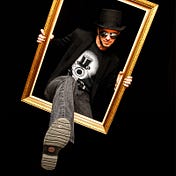I became fascinated by the notion of identifying 'high quality' knowledge inside organizations when I got the opportunity to help develop a 3D mine modelling and blast layout/simulation system that eventually became the AMINE system while on a co-op term at the Noranda Technology Center - a mining research facility in Montreal.
At the time, 3d modelling was just becoming possible on workstations and in a rudimentary form on personal computers. The goal of the project was to build a set of tools that would allow mining operations to build and maintain their own models of mining operations so that the rock mechanics teams at the Technology Center would have a foundation for doing more complex finite element and other forms of analysis without having to build a model from scratch.
The lead of the AMINE project realized that the key to success of the project was enabling the staff at the mine to develop a unified model (known as a Digital Twin these days) by creating tools that enabled the smooth flow of knowledge required to build the model. The critical insight was allowing teams to contribute to their knowledge by making easy for the different teams to use their own language and domain specific terminology.
This philosophy of allowing people to work in a way that made sense to their domain and discipline instead of forcing them to work the way the tools did, but still able to create a model that was used by all the teams was a key enabling factor to the eventual success of the project.
(model of the Winston Lake Mine circa 1988)
While there were challenges associated with the 3D aspect of building a unified Digital Twin, the real challenge proved to be trying to manage all the data and information stored in the rapidly growing pile of files and documents that contained the background information for the model.
The lead of the project said at the time that the 'challenges associated with 3D modelling will be solved very quickly, but in 30 years from now, we will still be wrestling with how to identify high quality knowledge and the documents that contain it'.
This set me on a path that is still ongoing to develop systems to help harness the knowledge that organizations create through the value they produce. To do this, it means seeking to understand the nature of why organizations exist, and how the people in the organizations collaborate to develop the knowledge required to server their clients needs.
All organizations are in the business of managing the knowledge that enables them to be viable and survive dynamically changing market conditions. The organization as such can be thought of as a ‘Knowledge Ecosystem’ in which the knowledge the organization needs to survive evolves and changes in response to to the external market conditions it serves.
People who work inside the organization drive the process of ‘Knowledge Selection’ in which facts that are necessary for the business to operate are selected, interpreted and incorporated into the organization's ‘Knowledge DNA’.
This process currently happens organically and is manifested in the systems, processes, products, documents, communications the organization produces. Over time as technology has improved in terms of capability, more of this knowledge is captured in a digital form that is amenable to analysis.
The evolution of knowledge in the context of the interaction that occurs to drive the natural selection process exists completely outside the bounds of the digital systems that capture and store the knowledge artifacts themselves. As such, the databases, filestores, cloud storage, enterprise systems, email etc. - the knowledge repositories store only a static version of the knowledge. These repositories are like a graveyard, storing the remains but not capturing the rich life of the knowledge artifacts as they are born, grow and evolve through their lifecycle.
Large Language Models when combined with Knowledge Graphs and collaboration platforms afford a way of finally making it possible to bring to life the full richness of Knowledge Assets in an organization.
I will publish ideas on this subject as I explore this over time...
